Overview
There are 476 million Indigenous people around the world and spread across more than 90 countries. They belong to more than 5,000 different Indigenous peoples and speak more than 4,000 languages. Indigenous people represent about 5% of the world’s population. The vast majority of them – 70% – live in Asia.
Although they have different customs and cultures, they face the same harsh realities: eviction from their ancestral lands, being denied the opportunity to express their culture, physical attacks and treatment as second-class citizens.
Indigenous peoples are often marginalized and face discrimination in countries’ legal systems, leaving them even more vulnerable to violence and abuse. Indigenous human rights defenders who speak out face intimidation and violence, often supported by the state. In addition, individuals may be physically attacked and killed just for belonging to an Indigenous people.
Peaceful efforts by Indigenous Peoples to maintain their cultural identity or exercise control over their traditional lands, which are often rich in resources and biodiversity, have led to accusations of treason or terrorism.
Discrimination is the reason why Indigenous peoples make up 15% of the world’s extreme poor. Globally, they also suffer higher rates of landlessness, malnutrition and internal displacement than other groups.
Amnesty International has worked to defend the rights of Indigenous peoples in all regions of the world and demands that states apply and develop urgently needed laws to protect their lands, cultures and livelihoods.
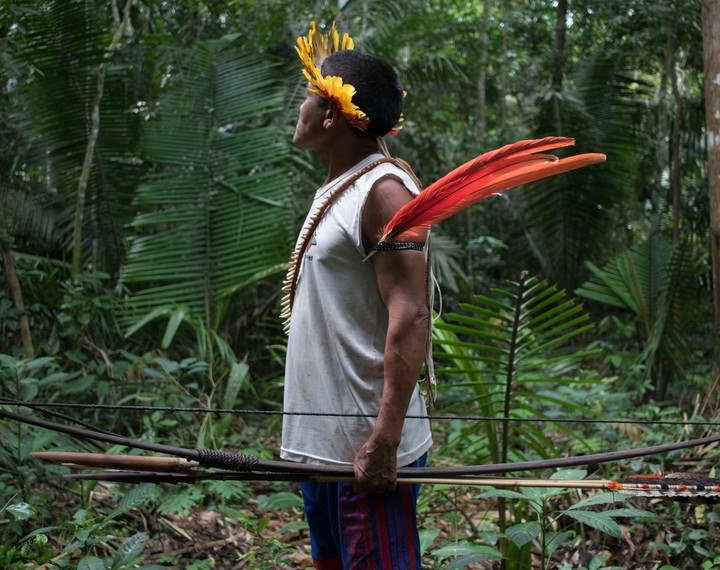
Key Facts
Who are Indigenous Peoples?
Indigenous Peoples can be identified according to certain characteristics:
- Most importantly, they self-identify as Indigenous peoples
- There is a historical link with those who inhabited a country or region at the time when people of different cultures or ethnic origins arrived
- They have a strong link to territories and surrounding natural resources
- They have distinct social, economic or political systems
- They have a distinct language, culture and beliefs
- They are marginalized and discriminated against by the state
- They maintain and develop their ancestral environments and systems as distinct peoples
Each of these characteristics may be more or less important depending on the situation. Indigenous Peoples are also known as First Peoples, Aboriginal Peoples, or Native Peoples. In some countries there are specific terms such as Adivasis (India) or Janajatis (Nepal).
Indigenous Peoples have a special relationship with the land on which they have lived for generations, sometimes for tens of thousands of years. They possess crucial knowledge about how to manage natural resources sustainably and act as guardians or custodians of the land for the next generation. Losing their land means a loss of identity.
International law and Indigenous Peoples
Indigenous Peoples’ rights are laid out in the UN Declaration on the Rights of Indigenous Peoples, adopted in 2007.
The United Nations Permanent Forum on Indigenous Issues (UNPFII) is the central body within the UN system which deals with Indigenous issues related to economic and social development, culture, the environment, education, health and human rights. The Forum was established in 2000.
Indigenous land rights
Indigenous Peoples’ land ownership rights are recognized under international law. States cannot relocate Indigenous Peoples without their free, prior and informed consent and without offering them adequate compensation.
The land that Indigenous Peoples live on is home to over 80% of our planet’s biodiversity and rich in natural resources, such as oil, gas, timber and minerals. However these lands are routinely appropriated, sold, leased or simply plundered and polluted by governments and private companies.
Many Indigenous Peoples have been uprooted from their land due to discriminatory policies or armed conflict. Indigenous land rights activists face violence and even murder when they seek to defend their lands.
Human rights abuses related to their land rights and culture, have prompted growing numbers of Indigenous Peoples to leave their traditional lands for towns and cities. Cut off from resources and traditions vital to their welfare and survival, many Indigenous Peoples face even greater marginalization, poverty, disease and violence – and sometimes, extinction as a people.
Case study: Peru
Amnesty campaigned for Máxima Acuña Atalaya, a peasant farmer from Peru who stood up against one of the world’s biggest gold mining companies. The company tried to intimidate her into leaving her land so that they could exploit it. After almost five years of proceedings into unfounded criminal charges of land invasion, the Supreme Court of Justice ruled that there was no reason to pursue the groundless trial, and in May 2017, charges against Máxima were dropped.
More than 150,000 Amnesty supporters sent solidarity messages to Máxima.
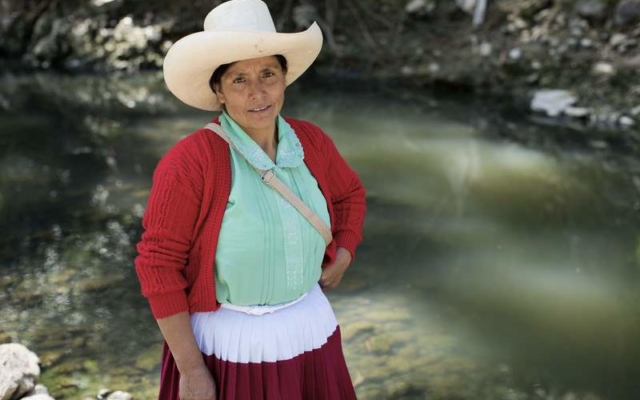
What is the situation for Indigenous women and children?
From India to Peru, Indigenous women have higher rates of maternal mortality, teenage pregnancy and sexually transmitted diseases and are more likely to suffer violence.
Indigenous women are less likely to use health care facilities when pregnant because of discrimination and mistreatment; and so, they are more likely to die giving birth. For example, in Panama and Russia, Indigenous women are about six times more likely to die in childbirth than women from the non-Indigenous population. The birth rate for Amerindian adolescent girls is twice that of the general Guyanese population. In Kenya, Maasai women are twice as likely to have had no antenatal care, and in Namibia, San women are ten times more likely to give birth without skilled attendance.
In a horrifying violation of their human rights, more than 2,000 poor Indigenous and campesino women were allegedly sterilized without their consent by state authorities in Peru in the 1990s. On 22 January 2014, the Public Prosecutors office in Lima closed their case and denied them justice.
In some countries, Indigenous women suffer disproportionately from domestic violence as they bear the brunt of frustration and anger, resulting from deep-seated discrimination affecting the wider community.
Indigenous children are also vulnerable to abuse. In southern Africa, the children of the San, and other Indigenous peoples find it hard to access education. In south-east Asia, most women and girls trafficked across state borders are from Indigenous communities.
Case study: The Sengwer Indigenous Peoples
You can help support the Sengwer – an Indigenous community in Kenya
The Sengwer Indigenous Peoples have lived in the Embobut forest in Kenya since at least the 19th century. The Kenya Forest Service (KFS), under the Ministry of Environment and Forestry, is forcibly evicting the Sengwer from the forest; the authorities accuse the Sengwer of damaging the forest, but the government has no evidence of this. They are burning the homes of the Sengwer and use violence and intimidation against community members.
The Sengwer people were never genuinely consulted nor was their free and informed consent ever obtained prior to their eviction. This is a flagrant violation of Kenyan and international law.
Irungu Houghton, Amnesty International Kenya's Executive Director
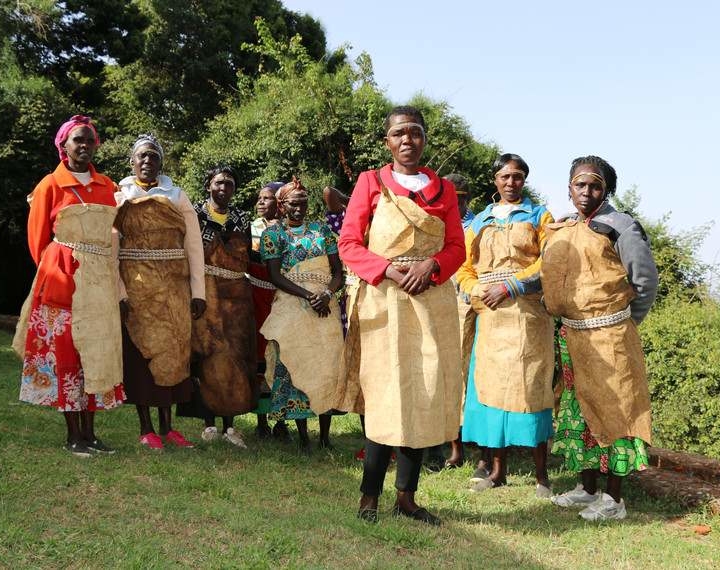
Replacing Columbus Day
An increasing number of countries in the Americas and several states in the US have replaced the national holiday Columbus Day with Indigenous Peoples Day to celebrate the resilience and cultures of Indigenous peoples across the Americas.
Columbus Day has been traditionally celebrated in many countries in the region and elsewhere to mark the anniversary of Christopher Columbus’ arrival on 12 October 1492.
Nowadays, there is growing consciousness that Columbus’ landing does not simply mark the arrival of Europeans in the New World but also the start of violence, exploitation, suppression and suffering of Indigenous peoples across the Americas.
Indigenous Peoples’ Day is also called First People’s Day, National Indigenous Peoples Day, Indian Day (Brazil), or Native American Day.
Right to self-determination
Around the world, Indigenous Peoples have been denied self-determination – a binding principle in international law which refers to peoples’ right to freely determine their political status and freely pursue their economic, social and cultural development. Instead, Indigenous Peoples have suffered violence and oppression by both colonizers and mainstream society.
During the 19th and 20th centuries, Canada removed Indigenous children from their families and placing them in federally funded boarding schools, with the intent of assimilating them into broader Canadian society. At these “Indian Residential Schools”, they were not allowed to speak their languages or express their cultural heritage and identities. As a result, “Aboriginal people were expected to have ceased to exist as a distinct people with their own governments, cultures, and identities”. An estimated 150,000 First Nations children suffered abuse in these schools.
Aboriginal children in Australia were also forced to assimilate into white culture and were placed in institutions where they suffered abuse and neglect. These children are known as the “Stolen Generations”.
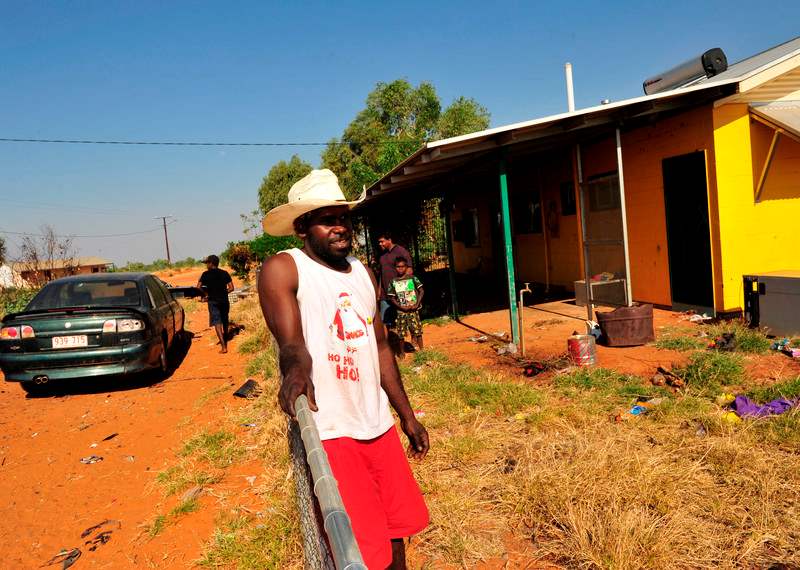
Protecting Indigenous cultures
Indigenous peoples face exclusion and discrimination just because they identify as members of Indigenous groups. Discrimination impacts their everyday life, it restricts their rights to education, health care and housing.
All across the world, Indigenous peoples’ life expectancy is up to 20 years lower compared to non-Indigenous people.
Indigenous peoples often rank highest for prison inmates, illiteracy and unemployment. Globally, they suffer higher rates of poverty, landlessness, malnutrition and internal displacement.
Indigenous knowledge is crucial for the environment
Although they comprise only 5% of the world’s population, Indigenous Peoples safeguard 80% of the planet’s biodiversity.
More than 20% of the carbon stored above ground in the world’s forests is found in land managed by Indigenous Peoples in the Amazon Basin, Mesoamerica, the Democratic Republic of Congo, and Indonesia.
Their sophisticated knowledge of the natural world means that where Indigenous Peoples have control of the land, forests and biodiversity flourish. Their sustainable land use fights climate change and builds resilience to natural disasters.
We must support Indigenous peoples and preserve this knowledge as a vital tool to protect the environment and tackle climate change.
How does Amnesty International support Indigenous Peoples?
Amnesty works with Indigenous peoples to develop urgently needed laws to protect their lands, cultures and livelihoods. At the international level, Indigenous peoples have made their voices heard and effectively lobbied governments. Amnesty has supported them, for example, on the development of the UN Declaration on the Rights of Indigenous Peoples.
We also work to support Indigenous peoples in claiming their lands. After more than 20 years of living in deplorable conditions beside a main road, the Sawhoyamaxa Indigenous community in Paraguay won their legal battle to return to their ancestral land in 2014.
“We Indigenous People cry only when we have achieved our freedom. Today, it is like we are coming out of a prison, so many of us are crying because it is so emotional.”
Carlos Marecos, Community leader, Sawhoyamaxa Indigenous community
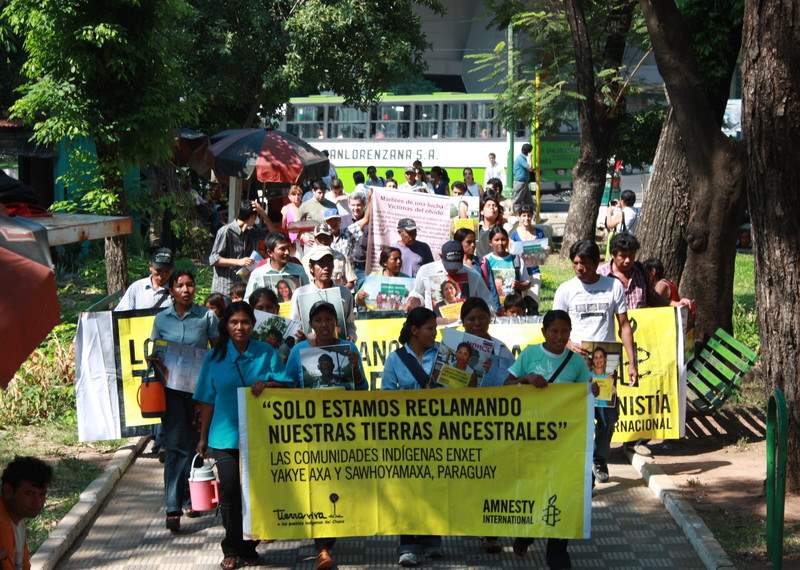
Amnesty is calling for
Governments must implement laws and policies that bring the UN Declaration on the Rights of Indigenous Peoples to life, particularly around:
• Effectively consulting Indigenous Peoples to obtain their free, prior and informed consent for decisions that affect them
• Maintaining their distinct cultural identities
• Living free from discrimination and the threat of genocide
• Having secure access to the lands and resources essential to their well-being and ways of life

